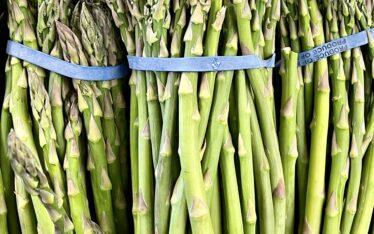How do we form new habits? If it were easy we wouldn’t need to make all those New Year’s resolutions! We know that a healthier lifestyle contributes to a better quality of life, if not a longer one. “Compression of Morbidity” is a widely accepted theory that healthier lifestyle patterns (not smoking, regular exercise, healthy body mass index etc.) result in health related disability beginning later in life and persisting for a shorter period of time before death. In other words, you can do more and live better longer, postponing and compressing disability into a shorter period of time at the end of life. Isn’t this a pretty compelling reason for developing healthier habits?
Yet just knowing that something is “better for us” isn’t enough to make us do it. And it’s only in the doing, repeated on a daily, weekly, yearly basis that new habits are created. So, how do we get started? You may have grown up hearing your Mom, Grandma or third grade teacher saying, “30 days makes a habit.” They were right, of course, forming a new habit takes consistency over a sustained period of time.
Fortunately, there is some good news about dietary habits. A recent study in the American Journal of Clinical Nutrition concerning the safety and usefulness of artificial sweeteners quotes the old adage “We like what we eat more than eat what we like”.
We eat the foods that are familiar to us. We learn to eat when we are little and what Mom gave us for breakfast is what we “love” to eat for breakfast – more or less! Thus food choice is largely determined by habit, and not strictly by taste – our taste develops from the habit.
By choosing new foods that we enjoy and can consistently include in our diet we subtly change what we love to eat. The biggest challenge to enjoying whole foods taste for many people is the palatability issue. When we eat a diet high in processed foods, we experience mostly just the sweet and salty tastes. In Chinese medicine, the “5 Element Theory” states that we need to experience all 5 tastes (sweet, salty, bitter (dark leafy greens like dandelion or arugula), sour (lemon) and pungent (radish) to maintain our internal balance. Further, the sweet and salty tastes are at opposing ends of the spectrum and having an excess of one creates a craving for the other in order to restore balance.
In this way, the standard American diet keeps us, and our palates, locked into the sweet and salty habit. This is just one of the many issues with using artificial sweeteners. For more information on artificial sweeteners, see the recent interview with Julie Cohen of MAD Nutrition on FOX Health News (see above).
By implementing change gradually, our palates can and do adjust to and enjoy the taste of natural foods. Dr. John Douillard, a great ayurvedic practitioner and teacher of mine, calls this the “51% rule”. When you are making good choices more than ½ the time, you keep yourself moving forward toward a greater and greater percentage.
The first step is to take action and make a small change. It’s not wise to try to change too many things at once. Dietary change is never a “flash cut” but rather a series of steps that start from wherever you are. When you notice a difference in how you feel (more energy, mental clarity, weight loss, less tired, moody etc.) and you associate that difference with your new choices, you internalize the value of the change and are much more motivated to continue with the habit.
Food Focus: Asparagus
 Bundles of bright green asparagus are coloring the landscape of our produce departments this month. Though it is available year-round, spring the best season to enjoy fresh asparagus. The growing season is from late February to June and, here in the northeast, from late April through early June with the largest local crop (and best prices!) in May. Speaking of price, the Environmental Working Groups’, “Shopper’s Guide to Pesticides” lists asparagus as one of their “Clean 15” meaning that it is among the lowest in pesticide residues, so you don’t need to buy organic.
Bundles of bright green asparagus are coloring the landscape of our produce departments this month. Though it is available year-round, spring the best season to enjoy fresh asparagus. The growing season is from late February to June and, here in the northeast, from late April through early June with the largest local crop (and best prices!) in May. Speaking of price, the Environmental Working Groups’, “Shopper’s Guide to Pesticides” lists asparagus as one of their “Clean 15” meaning that it is among the lowest in pesticide residues, so you don’t need to buy organic.
Asparagus is high in vitamins B6 and C, folate, fiber, the minerals potassium and zinc and glutathione, an anti-carcinogen and antioxidant. Asparagus comes in three varieties, green white or purple with green being the most common American variety. If you are traveling to Europe this spring you may come across fresh white asparagus which are milder tasting or the thicker stalked purple variety found mostly in England and Italy.
Asparagus is one of the few vegetables that is grown as a perennial since the plants have a 10-year lifespan. It takes three years from the time the seeds are planted to when the first stalks are produced but it is worth the wait! Plants are either male or female. Male plants produce a greater number of stalks but the stalks are generally smaller in size whereas female plants produce a lesser quantity of larger sized stalks.
Store your asparagus like cut flowers – place them upright, in a bowl of water in your refrigerator. Stored this way they will stay fresh for several days to a week depending on freshness. Stalks vary in size and thickness but size is not necessarily indicative of quality. Select stalks that are straight and all of about the same diameter with crisp, tightly closed tips.Thin stalks of asparagus are delicious eaten raw dipped in hummus or your favorite vegetable dip. Larger stalks can be steamed, blanched, quick boiled, roasted, grilled or stir-fried. Asparagus has a short cooking time (5 to 10 minutes for most cooking methods) making it a great choice for busy spring weeknights.
Asparagus make a wonderful addition to risotto, frittatas or omelets. It is delicious roasted (400 – 450 degrees, for 5 – 10 minutes, depending on size) with extra virgin olive oil and sea salt. One of my favorite late spring vegetable pairings is Sautéed Asparagus and Sugar Snap Peas (planted in the northeast around St. Patrick’s day and harvested in late May through September), inspired by Ina Garten’s simple, yet delicious recipe from her “Barefoot Contessa Parties!” cookbook. Sauté the asparagus (cut into 2-inch pieces) and the snap peas in extra virgin olive oil, sprinkling with sea salt and red pepper flakes (if desired) for about 10 minutes until crisp-tender. This month’s recipe is one of my own favorite “go- to” party recipes.
BACK ISSUE LINK: Early spring is a transitional time when we are still eating some of winter’s foods on the colder days and beginning to enjoy the first green leaves of the season on the warmer ones. For more information about spring’s bitter greens click to view the March 2008 issue in our archives. Spring is the time to go green!
Recipe: Besides being delicious, the following recipe is a great choice for entertaining because you prepare it ahead of time and leave it in the fridge…leaving you with more time to enjoy your company and the warm spring sunshine.
Recipe of the month
 Bundles of bright green asparagus are coloring the landscape of our produce departments this month. Though it is available year-round, spring the best season to enjoy fresh asparagus. The growing season is from late February to June and, here in the northeast, from late April through early June with the largest local crop (and best prices!) in May. Speaking of price, the Environmental Working Groups’, “Shopper’s Guide to Pesticides” lists asparagus as one of their “Clean 15” meaning that it is among the lowest in pesticide residues, so you don’t need to buy organic.
Bundles of bright green asparagus are coloring the landscape of our produce departments this month. Though it is available year-round, spring the best season to enjoy fresh asparagus. The growing season is from late February to June and, here in the northeast, from late April through early June with the largest local crop (and best prices!) in May. Speaking of price, the Environmental Working Groups’, “Shopper’s Guide to Pesticides” lists asparagus as one of their “Clean 15” meaning that it is among the lowest in pesticide residues, so you don’t need to buy organic.
Asparagus is high in vitamins B6 and C, folate, fiber, the minerals potassium and zinc and glutathione, an anti-carcinogen and antioxidant. Asparagus comes in three varieties, green white or purple with green being the most common American variety. If you are traveling to Europe this spring you may come across fresh white asparagus which are milder tasting or the thicker stalked purple variety found mostly in England and Italy.
Asparagus is one of the few vegetables that is grown as a perennial since the plants have a 10-year lifespan. It takes three years from the time the seeds are planted to when the first stalks are produced but it is worth the wait! Plants are either male or female. Male plants produce a greater number of stalks but the stalks are generally smaller in size whereas female plants produce a lesser quantity of larger sized stalks.
Store your asparagus like cut flowers – place them upright, in a bowl of water in your refrigerator. Stored this way they will stay fresh for several days to a week depending on freshness. Stalks vary in size and thickness but size is not necessarily indicative of quality. Select stalks that are straight and all of about the same diameter with crisp, tightly closed tips.Thin stalks of asparagus are delicious eaten raw dipped in hummus or your favorite vegetable dip. Larger stalks can be steamed, blanched, quick boiled, roasted, grilled or stir-fried. Asparagus has a short cooking time (5 to 10 minutes for most cooking methods) making it a great choice for busy spring weeknights.
Asparagus make a wonderful addition to risotto, frittatas or omelets. It is delicious roasted (400 – 450 degrees, for 5 – 10 minutes, depending on size) with extra virgin olive oil and sea salt. One of my favorite late spring vegetable pairings is Sautéed Asparagus and Sugar Snap Peas (planted in the northeast around St. Patrick’s day and harvested in late May through September), inspired by Ina Garten’s simple, yet delicious recipe from her “Barefoot Contessa Parties!” cookbook. Sauté the asparagus (cut into 2-inch pieces) and the snap peas in extra virgin olive oil, sprinkling with sea salt and red pepper flakes (if desired) for about 10 minutes until crisp-tender. This month’s recipe is one of my own favorite “go- to” party recipes.
BACK ISSUE LINK: Early spring is a transitional time when we are still eating some of winter’s foods on the colder days and beginning to enjoy the first green leaves of the season on the warmer ones. For more information about spring’s bitter greens click to view the March 2008 issue in our archives. Spring is the time to go green!
Recipe: Besides being delicious, the following recipe is a great choice for entertaining because you prepare it ahead of time and leave it in the fridge…leaving you with more time to enjoy your company and the warm spring sunshine.









Recent Comments